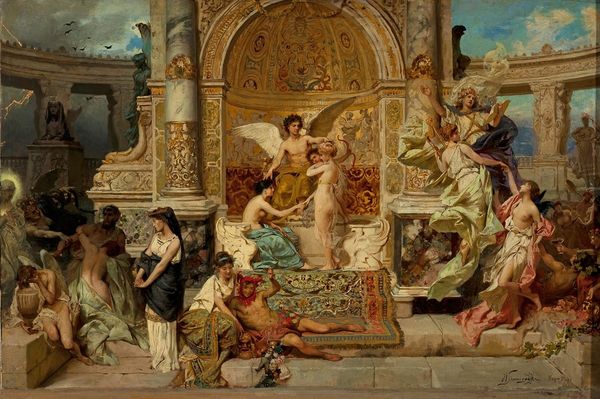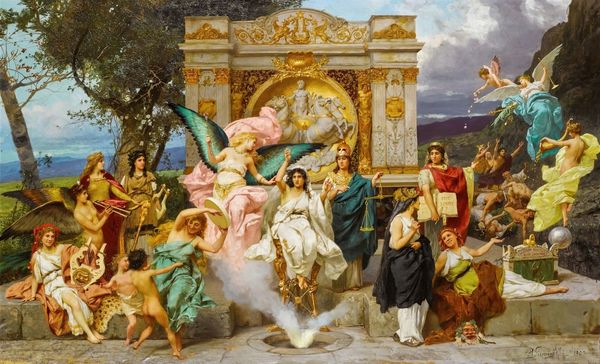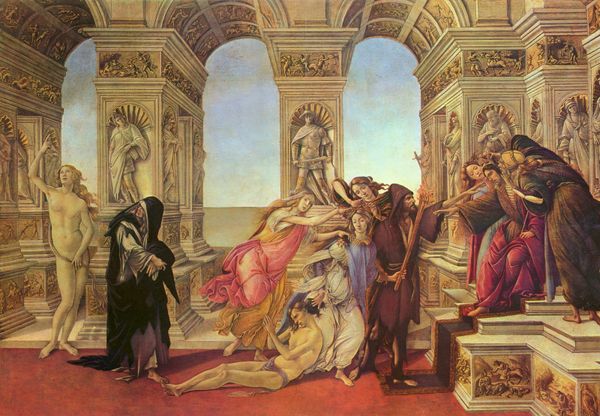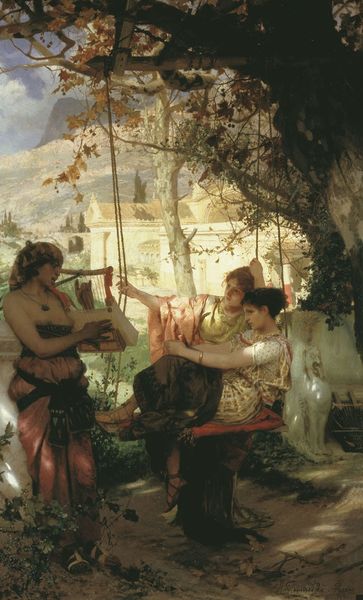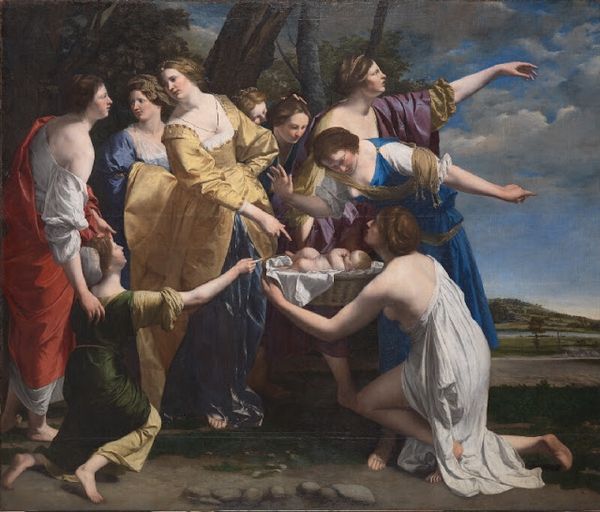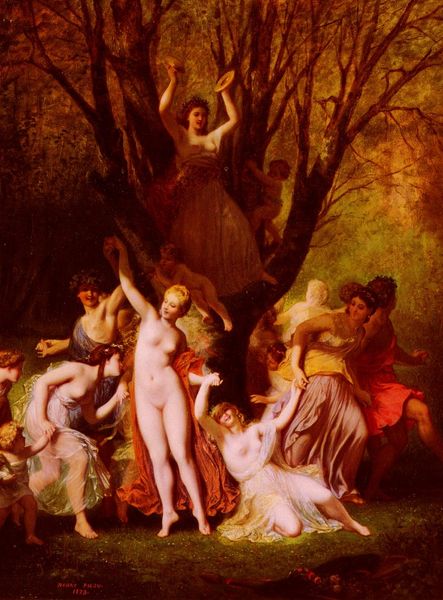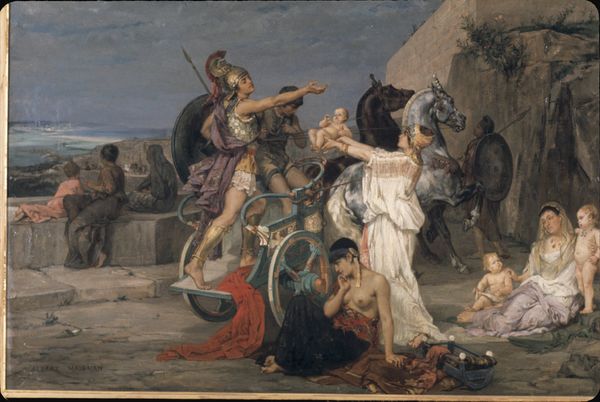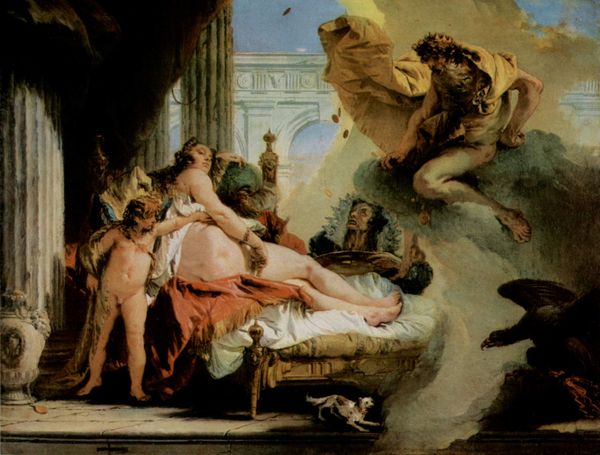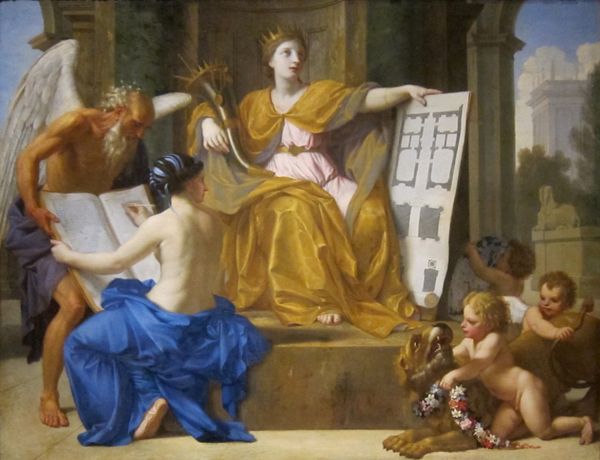
painting, oil-paint
gouache
neoclacissism
allegory
narrative-art
painting
oil-paint
classical-realism
figuration
oil painting
classicism
romanticism
mythology
painting art
history-painting
academic-art
Copyright: Public domain
Curator: Oh my, look at this spectacle! All those swirling figures… It's like a fever dream you might have after reading too much Ovid. A truly grand stage is set! Editor: Indeed. We're looking at Henryk Siemiradzki's “Study for Curtain”. It's believed to be an oil on canvas preparatory study, possibly for a theater curtain or large-scale decorative work, showcasing his talent for allegorical narratives and history painting. Curator: The curtain feels like the dawn of time in a particularly lavish opera. Is that meant to be a goddess taking center stage there, or an allegory for theatre itself? And goodness, she's quite literally smoking! Editor: I see this more as a study of cultural power dynamics in late 19th century Europe. Notice how the idealized figures reference classical antiquity, a period which provided a legitimizing historical narrative for European empires and cultural institutions, with which Siemiradzki aligned himself. Curator: Ah, there's always that slight taste of societal endorsement mixed in. I can sense that subtle embrace, like adding too much cream to my afternoon tea. Still, the execution... all the players bathed in a light I'd only find in stories. Editor: His technical skill cannot be denied. You see his deft hand playing with light, borrowing elements from Romanticism to soften Classicism’s sharp edges. His appeal was not merely aesthetic. He consciously crafted historical images and scenes from mythology, providing viewers with readily digestible narratives which confirmed the supposed supremacy of European culture. Curator: Digestible yes, with enough pomp and splendor to make history appealing. All those beautiful, luminous creatures rising from what seems to be a fiery fountain… Editor: Think of how images of 'progress' and cultural achievement functioned at world fairs during this period, for instance. Siemiradzki was participating in a similar enterprise here, selling narratives of European dominance through the careful staging of historical scenes. Curator: Interesting! He weaves a world of beauty around what he feels. Beauty might not always equate to truth. What Siemiradzki captures, though, is more of an atmosphere—of how humanity interprets truth to suit its needs. Editor: I think ultimately this study encourages us to consider the persuasive capacity of art itself. Siemiradzki used his remarkable technical ability to create a cultural performance and it begs us to question what, exactly, he intended his audience to buy into. Curator: Makes me think, if beauty hides and beauty shows—I hope they can still hear us whispering through his curtain!
Comments
No comments
Be the first to comment and join the conversation on the ultimate creative platform.
